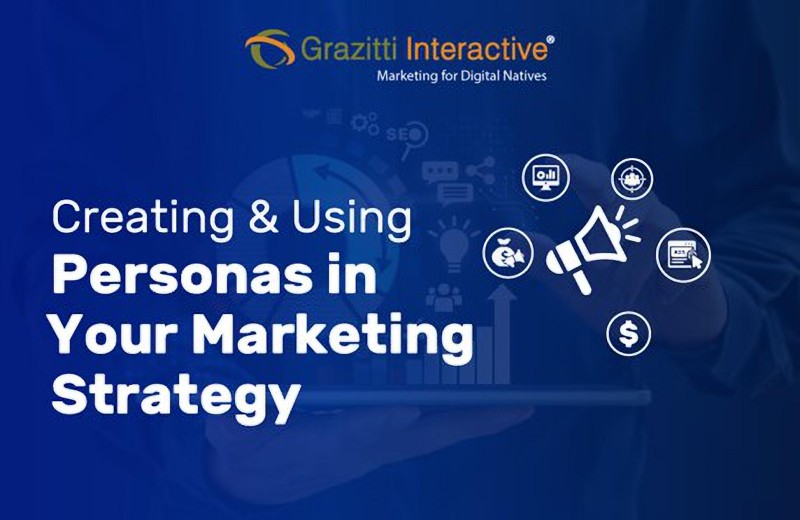Creating & Using Personas in Your Marketing Strategy
This page may contain links to Amazon.com or other sites from which I may receive commission on purchases you make after clicking on such links. Read my full Disclosure Policy

Also known as a buyer persona, a marketing persona is a semi-fictional representation that describes the primary characteristics of your target audience.
Creating a marketing persona based on research and audience segmentation will help you understand audience needs and interests.
Creating content on this basis will enable you to generate high-quality leads.
Once results kick in, you’ll be able to further build the products and services you provide.
If you’re still unsure about creating personas, consider the fact that they enable you to increase website traffic by as much as 210%, on average.
In addition to this, using personas helps you improve email conversions and click-through rate by 10% and 14%, respectively.
In this blog post, you’ll get the top tips for creating buyer personas and using them to build customer-centricity into your marketing efforts.
3 Tips to Create an Effective Buyer Persona
In today’s day and age, buyer personas are a marketer’s best friend.
They are essential to maintaining a competitive edge, ensuring an engaging user experience, and keeping your ideal customers in mind.
Here are the top 3 tips to create buyer personas and drive your marketing efforts with increased ROI:
1. Segment Your Buyer Personas
Divide audiences into segments based on common characteristics. Here’s how you can do this:
- Demographic Segmentation: It is based on location, age, life-stage, gender, race, nationality, religion, and more.
- Socio-economic Segmentation: Based on income, education, and occupation, it gives you insights into what customers value.
- Psychographic Segmentation: It is based on general psychological or personality traits such as attitudes, values, and aspirations.
- Goal-Based Segmentation: It is based on goals, or what the audience is trying to get out of your product or service.
These parameters are essential to identify the least and most profitable audience sets, enabling you to focus on those most likely to buy your product.
2. Reinforce Your Personas With Examples
Once you’ve segmented your audience, share stories and examples of personas in action.
Request customer-facing teams to also share examples of how they leveraged insights from personas.
This will enable you to improve customer service, as the stories will guide you towards learning more about what customers want.
3. Incorporate Negative Personas
It is essential to know whom not to target so that valuable resources are put to effective use. To do so, find out if:
- There is high customer acquisition cost
- The user is an industry enthusiast (and not a customer)
- Your products and services do not align with their goals
- There are budget constraints
Leverage Google Analytics to build personas and improve your products and services to meet audience requirements.
How to Use Personas in Your Marketing Strategy
Customers and businesses evolve with time. Therefore, using personas in your marketing strategy will be an ongoing process.
Here are a few ways to put them to use:
1. Imagine Your Persona Is a Real Person
Making personas as real as possible is critical to your ability to relate to your target audience.
They help humanize your target audience, enabling employees across departments to become more empathetic and effective when working with customers.
Here’s what you can do:
- Provide each persona a name to make them more true-to-life
- Add a photograph so you can picture your persona when creating marketing material
2. Find Out Which Social Platforms Your Audience Is On
Once you know who your audience is, find out where they are, online.
Are they on Twitter? Instagram? LinkedIn?
While older generations have increased Facebook use in the last four years, Twitter and Instagram remain popular among young audiences.
Find out if your business has an online community on these social media platforms. This will help you prioritize which ones to focus on.
3. Determine What Content Your Audience Needs
When creating a buyer’s journey, you must know your audience and build a strategy that provides content specific to each phase of the journey.
This will enable you to build strong customer relationships and boost conversions.
Use the language your audience uses to build resonance, resolve pain points, and build trust.
Wrapping Up
The success of your marketing strategy relies on the effectiveness with which it focuses on the right target audience.
Create and use personas in strategic initiatives and you’ll be well on your way to marketing success!




This sounds like a way to bring clarity to my target client, almost like creating an avatar for the clients I am trying to attract. Great idea! This post challenges me to realize that I’m serving multiple personas at the moment, and that is important to keep in mind when I’m creating content.
It is like creating an avatar, and is definitely important to keep in mind when you’re creating content.
I took a lot of marketing classes in college (for communications) and graduate school (for television production and management), and so I think I innately do a lot of this when considering my marketing message and outlets, but a refresher to do this more strategically is essential. I think psychographic segmentation is the area where we think we understand it best, but it’s hardest to really get a sense.
Sometimes I think we do better when something isn’t so deeply ingrained, because we have to pay more attention to what we’re doing.
It’s important to mention that creating personas is easier for business owners with collected information on their websites. Google Analytics data can help you make the personas if your site collects some audience information. I did this around the 5th anniversary and found that I had to separate my small business audience from my home organizing audience, resulting in two websites instead of one. While it is more work, it helped me cater my content to the right audience. It also helped search engines understand the audiences resulting in better search results for my site. And I did see an increase in visits and sales.
Thanks for sharing that, Sabrina – that’s awesome!
My first mistake when I was learning about buyer personas was thinking I needed to have one. Once I figured out I can have as many as I want ( within reason) then I started to understand this concept better. You can think about the products or services you offer and then come up with the persona who would love this product. Recently a Professional Organized shared that she has 12 personas that she marketed to. The more you develop the more complicated your marketing becomes and also the more targeted to those that will buy. After all it is called a buyers persona.
12, wow! Her marketing must be very complicated!
Thanks so much for sharing your experience and understanding. It’s always helpful to have things explained by a colleague who speaks the same language!